Polyester: high operating rate in peak season, contradictions may shift to Q4
The polyester polymerization rate has remained high since Q3 2023, which was around 93% in Jul and estimated to be around 92% in Aug. Companies do not face big pressure to cut run rate for the time being. If there is no burden from policy, the polyester polymerization rate seems to not have big space to fall.

High polymerization rate in Q3 is mainly benefited from good export of polyester products and the expectation of domestic sales peak season.
Export of polyester products continue rising on the year in 2023, especially fibers like PFY and PSF with more-than-expected export growth rate. In Jan-Jun, 2023, export volume of PFY and PSF increased by 27% and 25% respectively year on year.
On one hand, some downstream industries including apparels, fabric and DTY are transferring to overseas market while the integration of fibers is not complete outside China and China-made polyester products enjoy cost advantage in global competition due to complete industrial chain. Meanwhile, falling sea freight of this year also favors the exports of polyester fibers. On the other hand, some Indian buyers restocked in advance impacted by the BIS certification. When the development of downstream sector on polyester industrial chain is moving outside China, the exports of upstream products may continue to have bullish support.
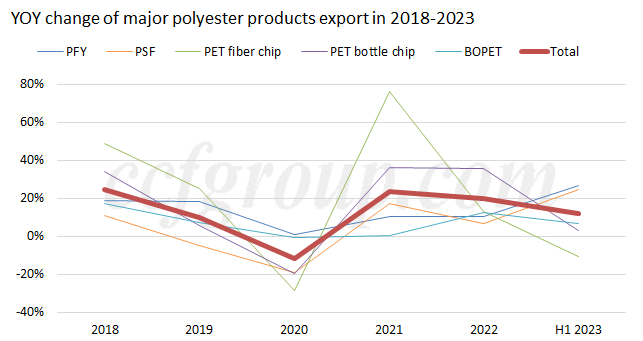
As for domestic sales, the operating rate of DTY plants and fabric mills slightly declines during the traditional off-season, but it is still above the 5-year average mainly because downstream plants are preparing the stocks for autumn and winter. The inventory burden of DTY, yarn and grey fabric sectors is intensive among the whole polyester industrial chain, and the stocks of PFY and PSF is not large. Downstream players pin their hopes on the release of demand for autumn and winter products and the bullish support from replenishment of overseas buyers.
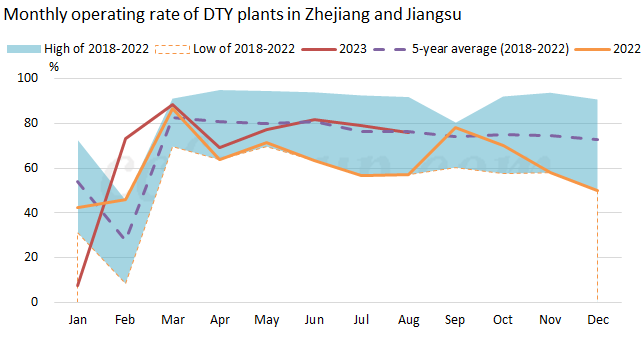
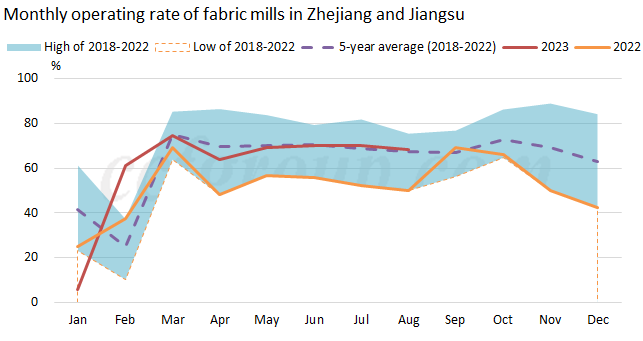
The operating rate of DTY plants, spinners and fabric mills may not reduce further or only inch down in short run. Therefore, the stocks of PFY and PSF are likely to not accumulate much. Recently, sales of PFY and PSF are expected to rise periodically.
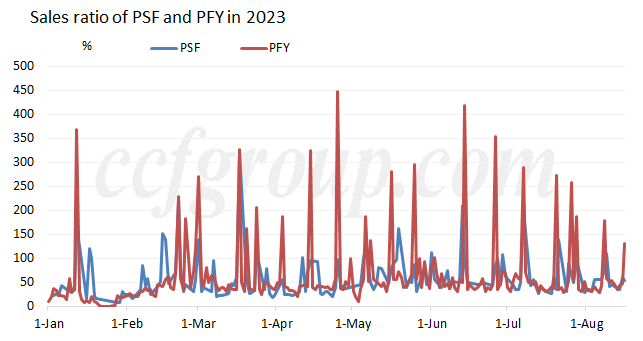
The polymerization cost does not fluctuate much this year and the current absolute value is at a relatively low level of two years. Most polyester products are profitable now.
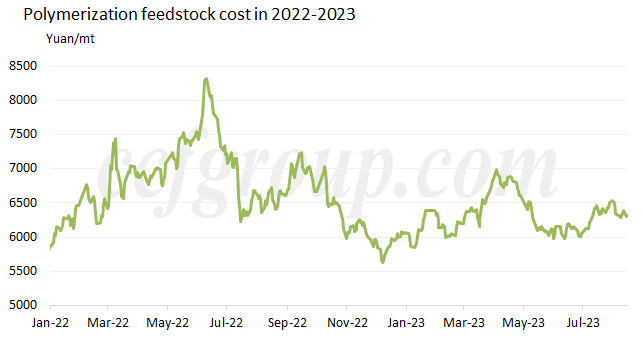
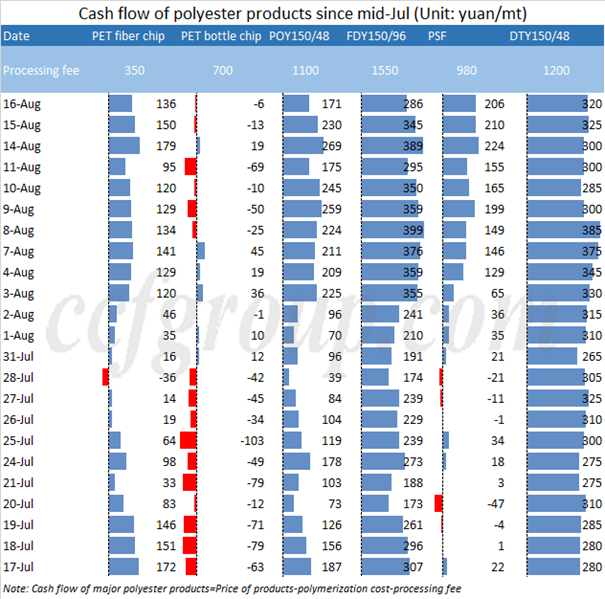
Therefore, if there is no policy issue in Sep, it is unlikely that polyester companies will take the initiative to reduce their operating rate.
For the whole polyester industrial chain, the polyester polymerization rate is high in Q3 and fabric mills are preparing stocks of seasonal products when the demand is not dull during the traditional off-season. If the peak-season demand is not as good as anticipated in Sep-Oct and the stocks do not reduce smoothly, players expect the contradiction of the whole industry to be released in Q4.
- Top keywords
- Cotton Price
- Cotton Futures Price
- Cotton Futures
- CZCE
- PTA Futures Price
- Chemical Fiber
- Polyester Prices
- Wool price
- PTA Futures
- Shengze Silk
- China
- Yarn Price
- price
- China Textile City
- Fibre Price
- Benzene Price
- Cotton
- Index
- Cotton Index
- PTA
- fabric price
- NYMEX
- Top 10
- textile industry
- Spot Cotton
- Cotton Yarn
- Polyester Price
- Futures
- PTA Price
- cotton yarn price

